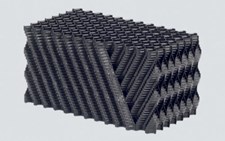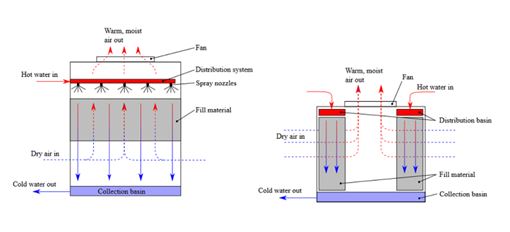Industrial cooling towers are an effective way to remove unwanted heat from one place to another using water as the transport media in applications where there is a need to have a reliable source of cool water year round in the 70°F to 100°F temperature range. Cooling towers are commonly used to cool products and machinery in a multitude of applications, including injection molding, tool and die cutting, food and beverage, chemicals, lasers, machine tool, semi-conductors and more. While there are a number of different manufacturers using various designs, all cooling towers operate using the same principle of evaporative cooling.
How Does A Cooling Tower Work?
Evaporative cooling is a natural process that provides cooling evaporating water into air. A good example of this is the sudden sensation of getting cold when we step out of a hot shower, or misting fans used to help keep football players cool on the sidelines. While we are in the shower, our skin is wet and not readily exposed to air, but when we step out into the air, the water on our skin begins to evaporate and pulls heat out of our bodies and we feel the cooling effect. Cooling towers use this same principle of evaporative cooling to cool a continuous flow of water.

Cooling towers are essentially large boxes designed to maximize evaporation of water. To do this, they contain material, typically PVC plastic sheets, that create large surface areas for water evaporation to occur. This material is what fills the inside of the cooling tower and is called "Cooling Tower Fill".
Large cooling towers, like those at nuclear power plants, rely on a natural draft or flow of air through the cooling tower; however, this is only effective on certain very large cooling towers. Most cooling towers use an electrical fan motor to create an air draft or airflow through the cooling tower. This type of cooling tower is called an "Induced or Force Draft" cooling tower.






